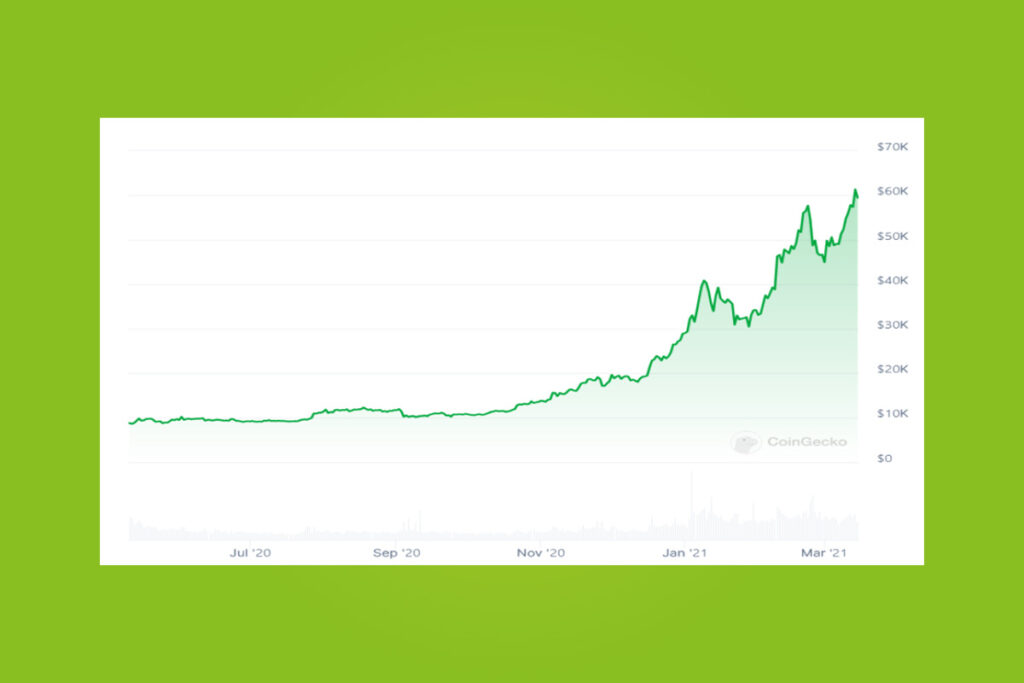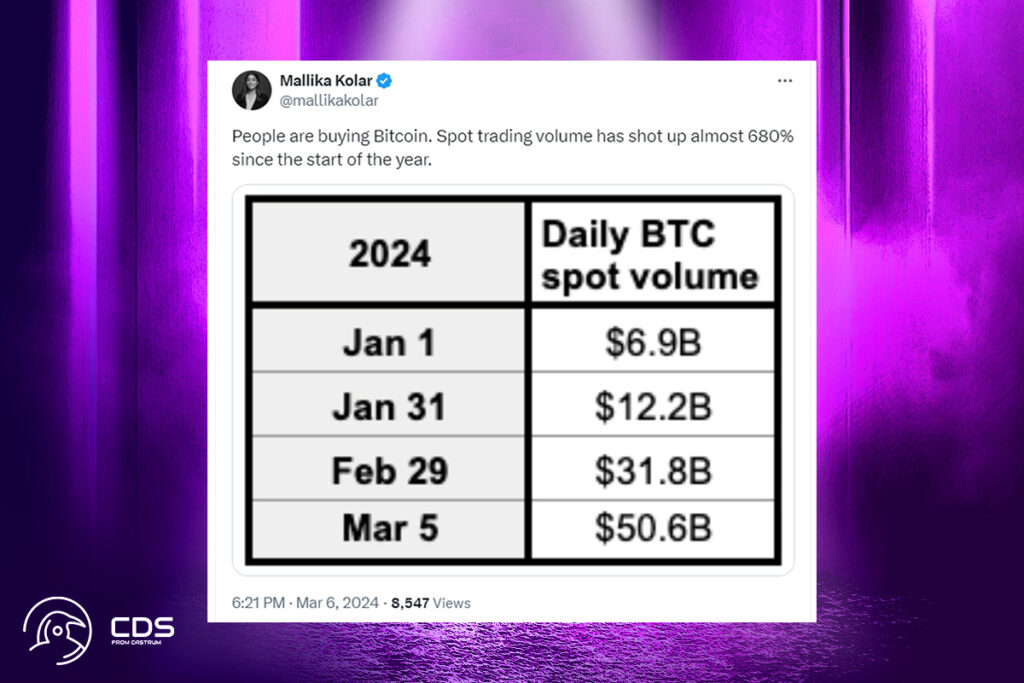What is Bitcoin Hashrate?
Understanding Bitcoin Hashrate: How It Works and Impacts BTC Price?
Crypto News- Bitcoin hashrate is the total computational power dedicated to securing the Bitcoin network. It measures the collective speed at which miners attempt to solve complex mathematical puzzles to validate transactions and earn block rewards.
Hashing: The process of finding a valid block through repeated calculations and guesses.
Units of Measurement: Hashrate is measured in hashes per second (H/s). Larger networks utilize terms like exahashes per second (EH/s).
Key Factors Influencing Bitcoin Hashrate:
- Mining Difficulty: The network adjusts difficulty to maintain consistent block production times (approximately 10 minutes). Higher difficulty requires more computational power.
- Hardware Efficiency: The development of specialized mining hardware (ASICs) has dramatically increased hashrate.
- Bitcoin Price: Profitability drives miner participation. Higher BTC prices can incentivize increased hashrate.
Hashrate and Bitcoin Price: The Relationship
While not a direct correlation, hashrate generally aligns with Bitcoin price trends. Here’s why:
- Network Security: A higher hashrate makes the Bitcoin network more resistant to attacks, increasing confidence and potentially boosting price.
- Miner Sentiment: Rising hashrate indicates strong miner participation, suggesting positive market outlook and potential price appreciation.
- BTC Halving Events: Bitcoin’s block reward halving (which cuts miner income in half) can lead to temporary hashrate declines, potentially affecting price in the short term.
Bitcoin Hashrate Explained: How It Works, Why It Matters
Key Concepts:
Bitcoin Mining: Miners use specialized hardware to solve complex puzzles, validating transactions and adding blocks to the blockchain.
Hashrate: Measures the overall computational power of the Bitcoin network (number of guesses per second). Higher hashrate = greater security.
Calculating Mining Profits: Use online Bitcoin mining calculators that factor in current hashrate and difficulty levels.

1- How Hashrate is Determined
- Mining Difficulty: The network adjusts difficulty to maintain consistent block production times.
- Blockchain Size: Larger networks typically have higher hashrate.
- Hardware Efficiency: Specialized mining hardware (ASICs) drives hashrate increases.
Hashrate Units of Measurement
- Kilohash/second (KH/s): Slow speeds
- Megahash/second (MH/s): Typical for a single GPU
- Gigahash/second (GH/s): Smaller mining pools
- Terahash/second (TH/s): Large mining pools or ASICs
- Petahash/second (PH/s): Very large mining pools
- Exahash/second (EH/s): Often represents the entire network’s power
2- Why Hashrate is Important
Network Security: Higher hashrate makes it harder for any single entity to disrupt the network.
Transaction Integrity: Ensures smooth, reliable transactions on the blockchain.
Indicator of Miner Activity: Rising hashrate suggests growing interest in Bitcoin mining.
Bitcoin Hashrate, Mining Difficulty, and Fees: Understanding the Current Landscape
Record-Breaking Hashrate: Bitcoin’s network hashrate has recently exceeded 610 trillion, signaling high miner participation and robust network security.
Difficulty Spike: Alongside the hashrate surge, Bitcoin’s mining difficulty has increased, making the mining process more competitive.
Fee Decline: Despite the bullish price action and hashrate, miner transaction fees have dropped to their lowest point this year, currently at around 3%. This could suggest reduced transaction volume on the network.
Miner Outlook: Relief, Increased Competition, and the Approaching Halving

2023 Trends: While improved Bitcoin prices and previous fee increases offered some relief for miners compared to 2022, the substantial hashrate increase (104%) intensified competition.
Pre-Halving Efficiency Push: Miners are prioritizing operational efficiency ahead of April’s halving, which will cut block rewards by half, placing financial strain on the sector.
Expected BTC Hashrate Drop: Analysts predict up to 20% of current network hashrate, particularly from older mining rigs, could go offline after the halving.
Upcoming CPI Week Holds Significance Amidst Absence of Fed Rate Cut Bets
The approaching week in the crypto sphere is poised to witness a pivotal event, with a focus on the Consumer Price Index (CPI) release for February scheduled on March 12. This event traditionally triggers short-term volatility in risk assets, and Bitcoin’s reactions are closely observed.
The prevailing narrative on inflation and Federal Reserve (Fed) policy remains fragmented. While markets express anticipation for interest rate cuts, Fed officials, including Chair Jerome Powell, are working to temper these expectations. The impending CPI figures, along with other data points, will serve as a crucial reference ahead of the upcoming Fed meeting just over one week away.
In the words of The Kobeissi Letter, a prominent trading resource, “A hot CPI inflation report this week would really set the tone of the March Fed meeting.” The sentiment is echoed across the market, emphasizing the significance of the week ahead.
Contrary to such expectations, the latest estimates from CME Group’s FedWatch Tool indicate minimal chances of a surprise rate cut at this month’s gathering, with the odds currently standing at a mere 3%. Additionally, other key data to be released during the week includes the Producer Price Index (PPI), along with jobless claims on March 13 and 15.
Expanding Pressure from ETF Bitcoin Buyers Captures Attention
As the week kicks off, observers in the Bitcoin market are keenly awaiting the resumption of buying activities by spot ETFs. This group of nine participants, constituting the most successful ETF launch in history, has played a significant role in transforming BTC prices, with expectations of this trend continuing.
While concerns about potential waning demand for ETFs linger, there is a notable sense of optimism among institutions. Cathie Wood, CEO of asset manager ARK Invest, recently shared that the firm’s $1-million BTC price target for 2023 has been expedited. Despite major U.S. wirehouses like Morgan Stanley and UBS yet to approve Bitcoin, Wood expressed confidence in the future price impact upon their approval.
Industry insiders are gearing up for this anticipated approval and the subsequent price impact. In a memo on March 9, crypto-native asset manager Bitwise highlighted that “major warehouses,” “institutional consultants,” and “large corporations” are next in line to add BTC exposure. According to Chief Investment Officer Matt Hougan, significant flows from these groups are expected in Q2 2024, accelerating throughout the year as investors become more comfortable with the new products.
Multiple Approaches Multi-Year High Amid Surging Miner Outflows
Bitcoin’s ascent to a new all-time high ahead of its impending halving has marked a historic event in its timeline, leaving many in awe. Notably, miners, who face a forthcoming halving and a 50% reduction in “new” BTC per block, have intensified their selling activities around these unprecedented highs.
This trend has been apparent throughout 2024, with miner outflows commencing since the launch of ETFs on January 11, as indicated by data from CryptoQuant. Despite this, the total daily revenue on March 7 reached the second-highest ever recorded at $75.9 million, a revelation shared by CryptoQuant contributor Julio Moreno on X.
The surge in Bitcoin prices has led to a rapid increase in miner revenues, as highlighted by trading suite DecenTrader on March 11. DecenTrader further pointed out the Puell Multiple, a metric assessing the value of coin issuance against its yearly moving average, reaching levels not seen in six years. The Puell Multiple serves as a valuable indicator for macro tops and bottoms, currently registering a score of +2.4, historically high but not surpassing previous cycle peaks.
Hodlers Exhibit Resilience Amidst Price Discovery
Despite the ongoing price discovery, steadfast Bitcoin hodlers are resolute in holding onto their acquired coins. On-chain analytics from Glassnode reveals that long-term holders (LTHs) have not yet matched the transfer volumes observed during 2021 when BTC/USD initially reached $69,000.
A notable spike of approximately 72,000 BTC occurred on February 24, with prices exceeding $70,000 failing to generate a larger single-day tally. Additional insights from crypto education resource On-Chain College indicate that the net unrealized profit/loss (NUPL) for LTHs, while robust, has not reached levels indicative of a blow-off top.
According to On-Chain College on March 11, “Bitcoin’s most convicted holders are still holding at unrealized profit levels that usually occur well before the cycle peak,” emphasizing the resilience and commitment of long-term Bitcoin holders.
Bitcoin Rally Drives Surge in Crypto Stocks, Miner Activity

Key Takeaways:
Crypto Stocks Soar: Bitcoin mining stocks (ClearSpark, BitDeer, Marathon Digital) outperformed broader market indices, with some seeing gains exceeding 20%.
Coinbase and MicroStrategy Rise: Major crypto players also benefited from the bullish momentum.
Miner Treasury Dynamics: Miners initially accumulated Bitcoin, but recent data shows increased selling pressure, potentially for profit-taking.
Market Observations:
Miner Market Cap Jumps: The aggregate market capitalization of bitcoin mining stocks has grown significantly since November.
BTC Held by Miners: Despite recent selling, miners still hold a substantial amount of Bitcoin (over 1.82 million BTC), representing 10% of the circulating supply.
ETF Influence: US-listed spot Bitcoin ETFs hold a significant portion of BTC, comparable to miner treasuries.
Notable Winners: MicroStrategy and Tesla have seen substantial gains on their Bitcoin investments.















1 Comment